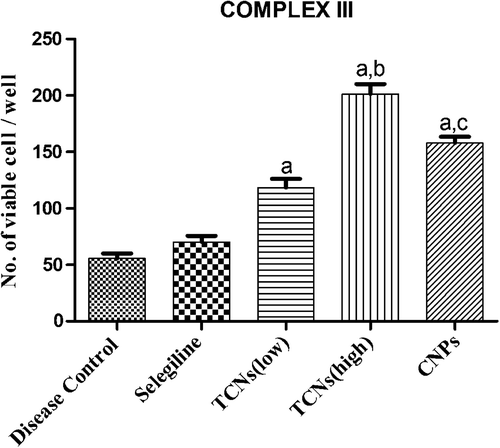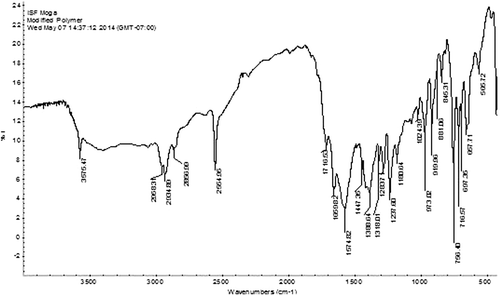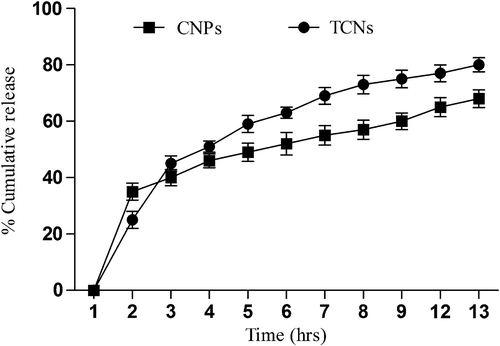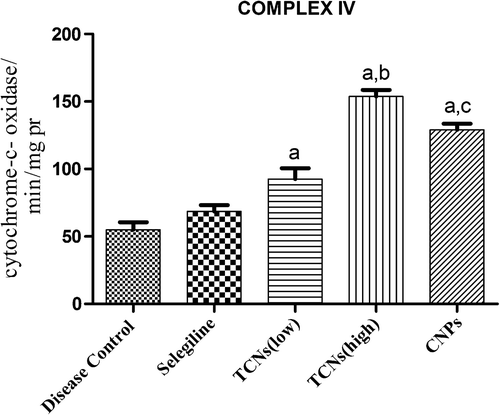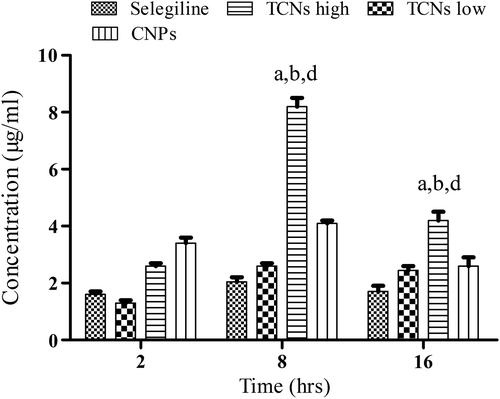Figures & data
Figure 1. Schematic representation of TCS synthesis. Covalent attachment was achieved by the formation of amide bonds between the primary amino groups of CS and the carboxylic acid groups of TGA-mediated EDC chemistry.
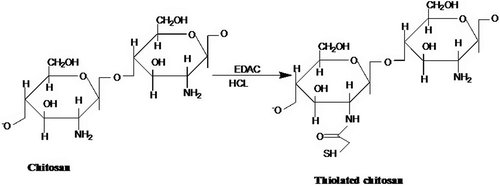
Table I. Experimental protocol design for forced swim- and tail suspension-induced depression.
Table II. Optimization of polymer/TPP ratio, homogenization speed, homogenization time, and drug optimization.
Figure 4. Effect of TCNs on the immobility time in depression-induced rats. Values were expressed as mean ± SEM. ap ≤ 0.05 as compared to disease control; bp ≤ 0.05 as compared to selegiline; cp ≤ 0.05 as compared to TCNs; ep ≤ 0.05 as compared to CNPs.
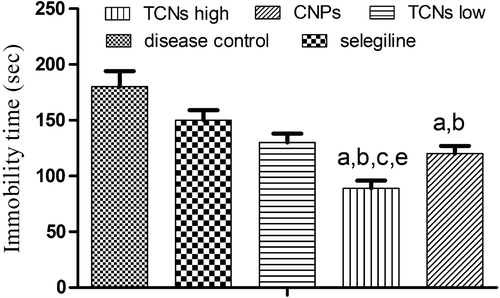
Figure 5. Effect of TCNs on the sucrose uptake in depression-induced rats. Values are expressed as mean ± SEM. **p ≤ 0.05 as compared to 7th day SPT; ap ≤ 0.05 as compared to disease control; bp ≤ 0.05 as compared to selegiline; cp ≤ 0.05 as compared to TCNs (low); dp ≤ 0.05 as compared to TCNs (high).
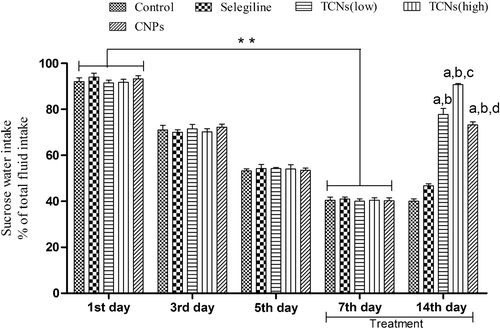
Figure 6. Effect of TCNs on the locomotor activity in depression-induced rats. Values are expressed as mean ± SEM. *p ≤ 0.05 as compared to 7th day locomotor activity; ap ≤ 0.05 as compared to disease control; bp ≤ 0.05 as compared to selegiline.
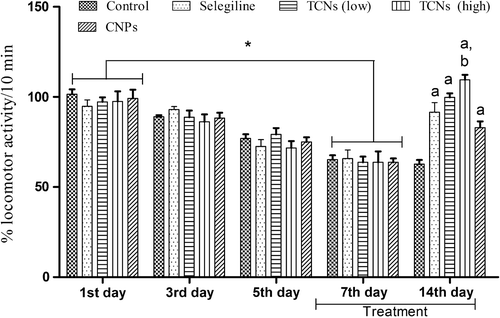
Figure 7. Effect of TCNs on nitrite level in depression-induced rats. Values are expressed as mean ± SEM. ap ≤ 0.05 as compared to disease control; bp ≤ 0.05 as compared to selegiline; cp ≤ 0.05 as compared to TCNs (low).
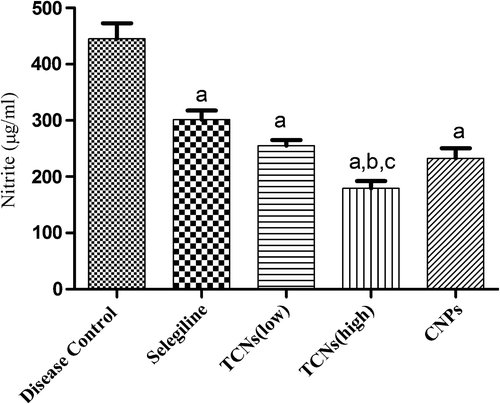
Figure 8. Effect of TCNs on GSH in depression-induced rats. Values are expressed as mean ± SEM. ap ≤ 0.05 as compared to disease control; bp ≤ 0.05 as compared to selegiline; cp ≤ 0.05 as compared to TCNs (low); dp ≤ 0.05 as compared to TCNs (high); ep ≤ 0.05 as compared to CNPs.
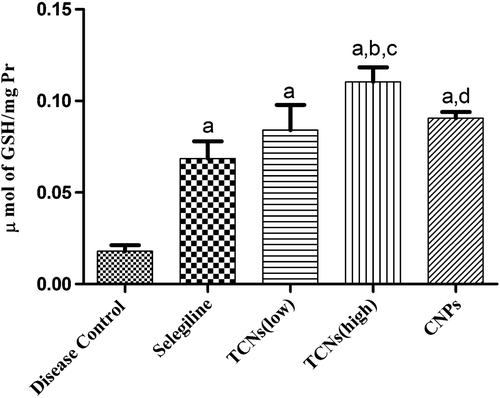
Figure 9. The effect of TCNs on LPO in depression-induced rats. Values are expressed as mean ± SEM. ap ≤ 0.05 as compared to disease control; bp ≤ 0.05 as compared to selegiline; cp ≤ 0.05 as compared to TCNs (low); dp ≤ 0.05 as compared to TCNs (high).
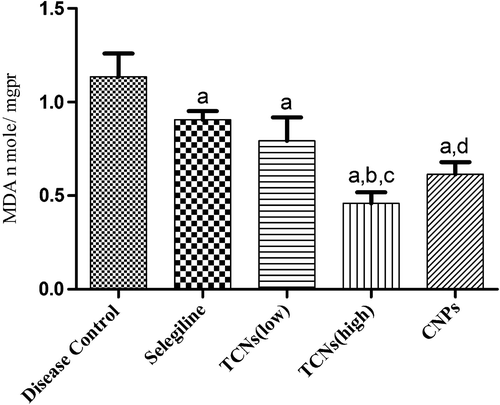
Figure 10. The effect of TCNs on catalase in forced swim-induced depression-induced rats. Values are expressed as mean ± SEM. ap ≤ 0.05 as compared to disease control; bp ≤ 0.05 as compared to selegiline; cp ≤ 0.05 as compared to TCNs (low).
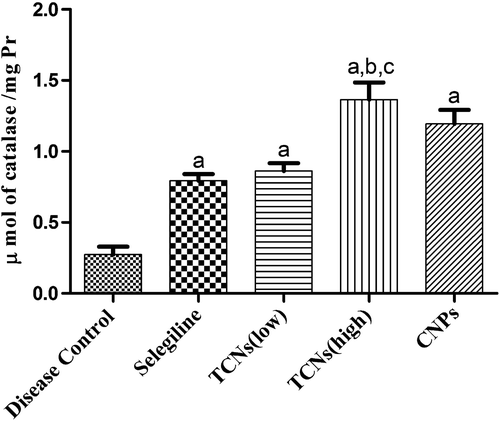
Figure 11. The effect of TCNs on SOD in depression-induced rats. Values are expressed as mean ± SEM. ap ≤ 0.05 as compared to disease control; bp ≤ 0.05 as compared to selegiline; cp ≤ 0.05 as compared to TCNs (low); dp ≤ 0.05 as compared to TCNs (high).
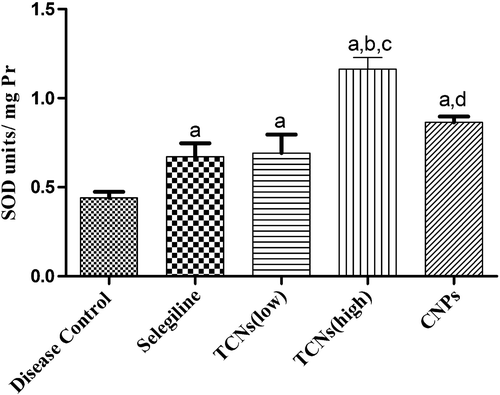
Figure 12. Effect of TCNs on the level of complex I in depression-induced rats. Values are expressed as mean ± SEM. ap ≤ 0.05 as compared to disease control; bp ≤ 0.05 as compared to TCNs (low); cp ≤ 0.05 as compared to TCNs (high).
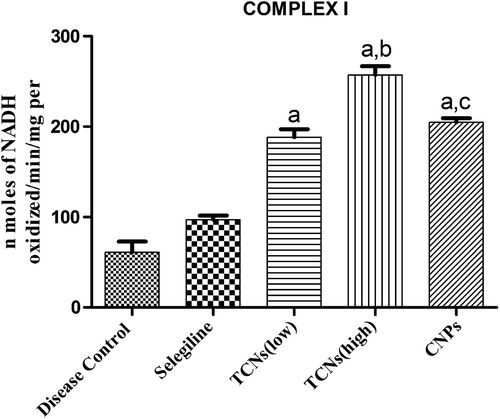
Figure 13. Effect of TCNs on the level of complex II in depression-induced rats. Values are expressed as mean ± SEM. ap ≤ 0.05 as compared to disease control; bp ≤ 0.05 as compared to TCNs (low); cp ≤ 0.05 as compared to TCNs (high).
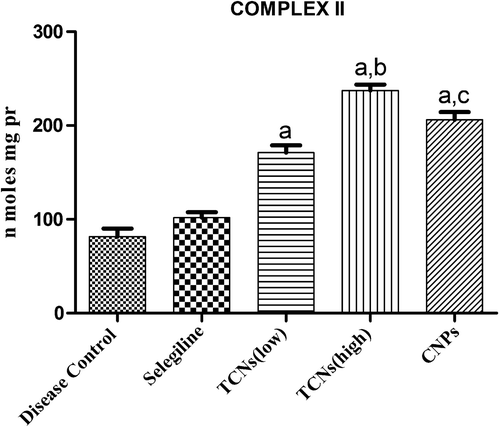
Figure 14. The effect of TCNs on the level of complex III in depression-induced rats. Values are expressed as mean ± SEM. ap ≤ 0.05 as compared to disease control; bp ≤ 0.05 as compared to TCNs (low); cp ≤ 0.05 as compared to TCNs (high).
